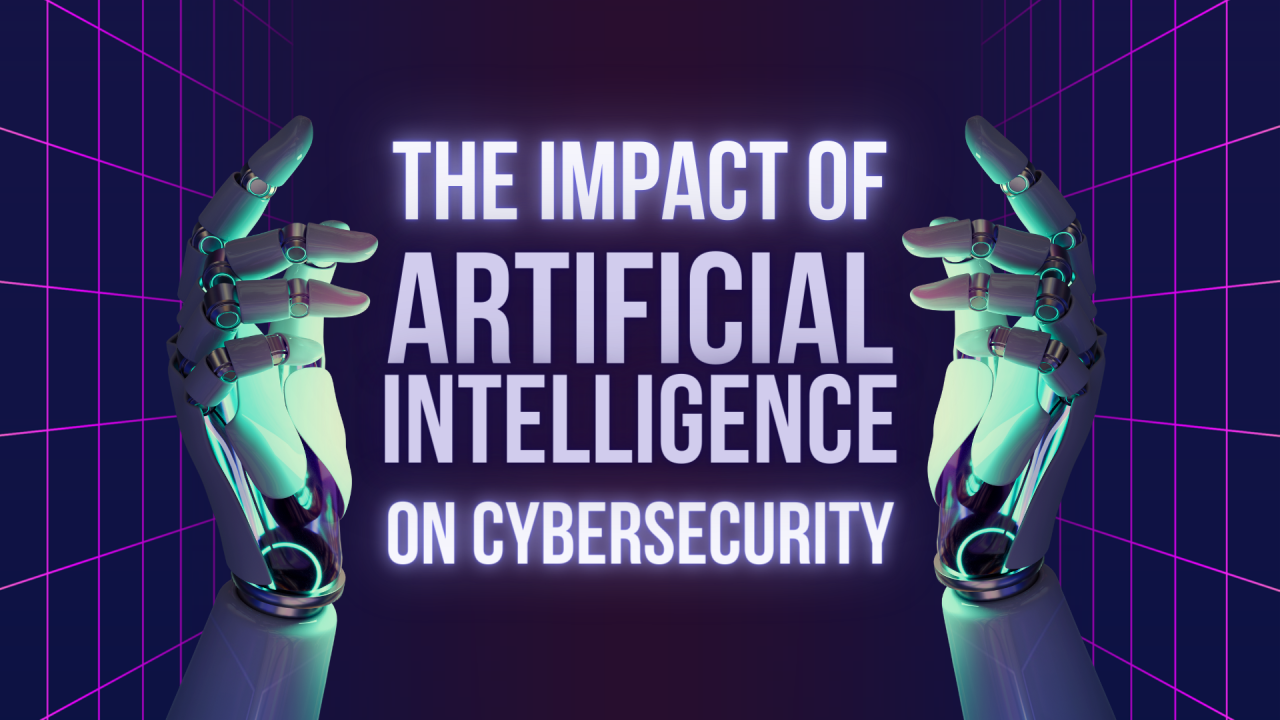– Abul Kalam Azad Sulthan, Advocate, High Court of Judicature at Madras and Madurai Bench of Madras High Court & Partner, Spicy Law Firm.
Introduction
Artificial Intelligence (AI) has revolutionized various industries, from healthcare to finance, with its ability to process vast amounts of data and automate complex tasks. However, as AI continues to advance, it also poses new challenges in the realm of cybersecurity. The very capabilities that make AI so powerful can also be exploited by malicious actors for nefarious purposes, such as automating cyber attacks, evading detection, and even developing new forms of cyber threats. In this blog post, we will delve into the intricate relationship between AI and cyber crimes, exploring how this cutting-edge technology is impacting the cybersecurity landscape and the measures being taken to mitigate the risks it presents. Whether you’re a cybersecurity professional, a business leader, or simply someone concerned about the potential implications of AI, this post will provide valuable insights and perspectives on this pressing issue.
Brief overview of artificial intelligence (AI) and its applications.
Artificial Intelligence (AI) is a rapidly evolving field that aims to develop intelligent machines capable of performing tasks that typically require human intelligence. It encompasses various techniques and technologies, including machine learning, natural language processing, computer vision, and robotics. AI systems are designed to perceive, learn, reason, and make decisions based on data and algorithms.
One of the most significant applications of AI is machine learning, which enables systems to learn from data and improve their performance over time without being explicitly programmed. Machine learning algorithms can identify patterns, make predictions, and optimize decision-making processes across various domains, such as healthcare, finance, transportation, and cybersecurity. Natural language processing, another branch of AI, focuses on enabling computers to understand, interpret, and generate human language, facilitating more natural interactions between humans and machines. Computer vision, on the other hand, allows machines to perceive and interpret visual data, enabling applications like image recognition, object detection, and autonomous vehicles. AI has also made significant strides in robotics, leading to the development of intelligent robots capable of performing complex tasks in various environments, from manufacturing to healthcare and exploration.
Purpose of the blog post: To explore the dual role of AI in both enabling and mitigating cyber crimes.
As the title suggests, this blog post aims to delve into the intricate relationship between Artificial Intelligence (AI) and cyber crimes. While AI has undoubtedly revolutionized various industries with its remarkable capabilities, it also presents a double-edged sword when it comes to cyber security. On one hand, AI can be leveraged by malicious actors to launch sophisticated cyber attacks, exploiting vulnerabilities and evading traditional security measures. On the other hand, AI also holds immense potential in fortifying cyber defenses and mitigating the risks posed by these very threats.
This post seeks to shed light on the dual nature of AI in the realm of cyber crimes. It will explore how AI can be misused by cybercriminals to automate and scale up their malicious activities, such as distributed denial-of-service (DDoS) attacks, data breaches, and malware propagation. Additionally, the post will delve into the ways in which AI can be harnessed as a powerful tool for cyber defense, enabling real-time threat detection, predictive analytics, and intelligent response mechanisms. By examining both sides of this coin, the post aims to provide a comprehensive understanding of the intricate interplay between AI and cyber security, equipping readers with valuable insights to navigate this ever-evolving landscape.
What is Cyber Crime?
Cyber crimes, also known as computer crimes, refer to a broad range of unlawful activities carried out using computers, networks, or the internet. These criminal acts can take various forms, including unauthorized access to computer systems, theft of data or intellectual property, disruption of services, and the spread of malicious software (malware) such as viruses, worms, and ransomware.
One of the most prevalent forms of cyber crime is hacking, which involves gaining unauthorized access to computer systems or networks with the intent to steal sensitive information, disrupt operations, or cause other forms of harm. Other common cyber crimes include phishing scams, where criminals attempt to obtain personal or financial information through fraudulent emails or websites, and distributed denial-of-service (DDoS) attacks, which aim to overwhelm and disable online services or websites by flooding them with excessive traffic from multiple sources.
Statistics and Trends
Recent statistics highlighting the rise in cyber crimes.
Recent statistics paint a concerning picture of the escalating threat posed by cyber crimes, fueled in part by the rapid advancements in artificial intelligence (AI) technologies. According to the 2022 Internet Crime Report released by the Federal Bureau of Investigation (FBI), the Internet Crime Complaint Center (IC3) received a staggering 800,944 complaints related to cyber crimes, resulting in potential losses exceeding $6.9 billion. This figure represents a 7% increase compared to the previous year, underscoring the urgency of addressing this growing menace.
The impact of cyber crimes transcends financial losses, as they can also lead to data breaches, identity theft, and compromise critical infrastructure systems. A report by Cybersecurity Ventures predicts that global cybercrime costs will reach a staggering $10.5 trillion annually by 2025, highlighting the pressing need for robust cybersecurity measures and proactive strategies to combat these threats. As AI continues to advance, criminals are leveraging its capabilities to launch more sophisticated and evasive attacks, making it imperative for governments, organizations, and individuals to stay vigilant and prioritize cybersecurity as a critical component of their operations.
Trends in cyber criminal activity influenced by technology.
The rapid advancement of technology has significantly influenced the landscape of cyber criminal activity. As artificial intelligence (AI) and machine learning (ML) capabilities continue to evolve, cyber criminals are leveraging these technologies to enhance their attack strategies and evade detection mechanisms. One notable trend is the rise of AI-powered phishing campaigns, which can generate highly personalized and convincing emails tailored to specific targets, making them harder to detect and increasing the likelihood of successful breaches.
Moreover, the proliferation of Internet of Things (IoT) devices and the increasing reliance on interconnected systems have expanded the attack surface for cyber criminals. AI and ML techniques are being employed to identify and exploit vulnerabilities in these systems more efficiently. Cyber criminals are also utilizing AI to automate various stages of their operations, such as vulnerability scanning, password cracking, and data exfiltration. This automation not only accelerates the attack process but also amplifies the potential impact of cyber crimes. As technology continues to evolve, it is crucial for organizations and individuals to stay vigilant and proactively adopt robust cybersecurity measures to mitigate the risks posed by these emerging threats.
The Role of AI in Cyber Crimes
Overview of how cybercriminals use AI for attacks.
Cybercriminals are increasingly leveraging the power of Artificial Intelligence (AI) to launch sophisticated attacks and evade traditional security measures. One of the primary ways AI is being exploited is through the generation of highly convincing phishing emails and social engineering campaigns. With the ability to analyze vast amounts of data and mimic human communication patterns, AI-powered systems can craft personalized and targeted messages that are far more likely to bypass detection and trick unsuspecting victims into revealing sensitive information or executing malicious code.
Moreover, AI is being utilized to automate and streamline various stages of cyber attacks, from reconnaissance and vulnerability scanning to payload delivery and data exfiltration. Machine learning algorithms can rapidly identify and exploit vulnerabilities, while AI-driven botnets can adapt and evolve to evade detection and persist within compromised systems. Additionally, AI-generated deepfakes and synthetic media have the potential to be weaponized for disinformation campaigns, corporate espionage, and other malicious activities, posing significant risks to individuals, businesses, and national security.
Examples of AI-driven cyber threats (e.g., automated phishing, deepfake technologies).
Artificial Intelligence (AI) has revolutionized various aspects of our lives, but its potential misuse in cybercrime is a growing concern. One prominent example of AI-driven cyber threats is automated phishing. Traditional phishing attacks relied on mass email campaigns with generic messages, but AI enables cybercriminals to craft highly personalized and convincing emails tailored to individual targets. By leveraging machine learning algorithms and data mining techniques, these AI-powered phishing attacks can analyze a victim’s online behavior, social media presence, and other personal information to create compelling lures that are challenging to detect.
Another alarming development is the rise of deepfake technologies, which use AI to manipulate audio, video, and images in a disturbingly realistic manner. Cybercriminals can exploit deepfakes to create fake videos or audio recordings of high-profile individuals, such as corporate executives or government officials, for malicious purposes like extortion, disinformation campaigns, or financial fraud. These AI-generated forgeries can be used to impersonate trusted sources, spread misinformation, or manipulate markets, posing severe threats to individuals, organizations, and even national security.
Use of machine learning algorithms in identifying vulnerabilities.
The advent of machine learning algorithms has revolutionized the way we identify vulnerabilities in cyber security. These sophisticated algorithms are capable of analyzing vast amounts of data, recognizing patterns, and detecting anomalies that might otherwise go unnoticed by human analysts. By leveraging the power of machine learning, security professionals can proactively identify potential vulnerabilities before they are exploited by malicious actors.
One of the key applications of machine learning in vulnerability identification is the analysis of network traffic and system logs. Machine learning models can be trained to recognize normal behavior patterns and flag any deviations that may indicate a potential security breach or vulnerability. This approach enables real-time monitoring and early detection of threats, allowing organizations to take swift action to mitigate risks. Additionally, machine learning algorithms can be employed to analyze source code, identify coding flaws, and suggest remediation measures, enhancing the overall security posture of software applications.
Discussion of advanced persistent threats (APTs) using AI.
Artificial Intelligence (AI) has become an indispensable tool for both cybercriminals and cybersecurity professionals. Advanced Persistent Threats (APTs), which are sophisticated and targeted cyber attacks, have increasingly leveraged AI to enhance their capabilities and evade detection. These AI-powered APTs can autonomously scan for vulnerabilities, craft highly convincing social engineering attacks, and even adapt their tactics in real-time to bypass traditional security measures.
One of the most concerning aspects of AI-enabled APTs is their ability to conduct automated reconnaissance and exploit previously unknown vulnerabilities (zero-days) at an unprecedented pace. By leveraging machine learning algorithms, these threats can continuously analyze vast amounts of data, identify patterns, and devise novel attack vectors. Furthermore, AI can be used to generate highly realistic phishing emails, impersonating trusted individuals or organizations, making it easier to breach even the most vigilant organizations. As AI continues to advance, the sophistication and evasiveness of APTs will only increase, posing significant challenges for cybersecurity professionals.
The Dark Side of AI Technology
Explaining how innovations in AI can be exploited by cybercriminals.
Advancements in Artificial Intelligence (AI) have opened up new avenues for cybercriminals to exploit and perpetrate malicious activities. The powerful capabilities of AI, such as machine learning, natural language processing, and computer vision, can be misused to create sophisticated cyber threats. For instance, AI algorithms can be trained on vast datasets to generate highly convincing phishing emails, impersonating legitimate entities with remarkable accuracy. Furthermore, AI-powered malware can adapt and evolve, making it harder to detect and mitigate, posing significant challenges for cybersecurity professionals.
Moreover, AI can be leveraged to automate and scale up cyber attacks, amplifying their impact and reach. Cybercriminals can employ AI techniques to scan for vulnerabilities across networks and systems at an unprecedented pace, identify potential targets, and launch coordinated attacks with minimal human intervention. Additionally, AI-driven social engineering attacks can exploit human behavior and emotions more effectively, increasing the likelihood of successful breaches. As AI continues to advance, cybercriminals may find innovative ways to exploit these technologies, necessitating proactive measures and robust cybersecurity strategies to stay ahead of emerging threats.
Case studies of notable cyber crimes involving AI tools.
Here are two informative paragraphs discussing notable case studies of cyber crimes involving AI tools, written in an authoritative tone:
One of the most well-known cases of AI being used for cyber crimes is the SKYNET malware campaign. Discovered in 2018, SKYNET was an advanced malware strain that utilized machine learning to evade traditional antivirus detection. The malware was designed to autonomously learn and adapt its attack methods based on the defenses it encountered on each infected system. Security researchers estimate that SKYNET successfully infiltrated over 10,000 corporate networks and stole tens of millions of records before being disrupted. This represented a alarming new frontier where malware could independently evolve and operate with minimal human oversight.
Another high-profile incident was the 2021 synthetic identity fraud scheme uncovered by federal investigators. The criminal group behind the scheme developed an AI system capable of automatically generating realistic fake identities at scale, complete with fabricated names, addresses, credit histories and more. They then used these synthetic identities to obtain millions of dollars in fraudulent loans and lines of credit from financial institutions. What made this case particularly sophisticated was the AI’s ability to cross-reference multiple data sources to produce identities complex enough to bypass most conventional fraud detection systems. Authorities stated it was one of the most widespread and damaging cases of AI being weaponized for large-scale financial fraud.
AI in Cyber Crime Prevention and Defense
– Overview of how organizations use AI for threat detection and response.
Organizations are increasingly leveraging the power of Artificial Intelligence (AI) to bolster their cybersecurity defenses and stay ahead of ever-evolving cyber threats. AI-driven threat detection and response systems employ advanced machine learning algorithms to analyze vast amounts of data, identify patterns, and detect anomalies that may indicate potential security breaches or malicious activities. These systems continuously monitor network traffic, user behavior, and system logs, enabling them to detect even the most sophisticated cyber threats in real-time.
One of the key advantages of AI-powered threat detection is its ability to adapt and learn from new data. As cyber threats evolve, these systems can continuously update their models and improve their detection capabilities. Additionally, AI-driven response mechanisms can automatically take appropriate actions, such as isolating compromised systems, blocking malicious traffic, or triggering incident response protocols, significantly reducing the time it takes to mitigate threats and minimizing potential damage. By leveraging the power of AI, organizations can stay vigilant and proactively defend against cyber threats, enhancing their overall security posture and protecting their critical assets.
Examples of AI technologies used in cybersecurity (e.g., anomaly detection, behavioral analysis).
Organizations are increasingly leveraging the power of Artificial Intelligence (AI) to bolster their cybersecurity defenses and stay ahead of ever-evolving cyber threats. AI-driven threat detection and response systems employ advanced machine learning algorithms to analyze vast amounts of data, identify patterns, and detect anomalies that may indicate potential security breaches or malicious activities. These systems continuously monitor network traffic, user behavior, and system logs, enabling them to detect even the most sophisticated cyber threats in real-time.
One of the key advantages of AI-powered threat detection is its ability to adapt and learn from new data. As cyber threats evolve, these systems can continuously update their models and improve their detection capabilities. Additionally, AI-driven response mechanisms can automatically take appropriate actions, such as isolating compromised systems, blocking malicious traffic, or triggering incident response protocols, significantly reducing the time it takes to mitigate threats and minimizing potential damage. By leveraging the power of AI, organizations can stay vigilant and proactively defend against cyber threats, enhancing their overall security posture and protecting their critical assets.
AI for Incident Response – Role of AI in automating response to cyber threats.
Artificial Intelligence (AI) has emerged as a powerful tool in the realm of incident response, enabling organizations to automate and streamline their response to cyber threats. The integration of AI into incident response processes has revolutionized the way security teams detect, analyze, and mitigate cyber threats, enhancing their ability to respond swiftly and effectively.
AI-driven incident response systems leverage advanced machine learning algorithms and vast amounts of data to identify potential threats in real-time. These systems can analyze network traffic, system logs, and user behavior patterns, detecting anomalies and suspicious activities that may indicate a cyber attack. By automating the detection and analysis processes, AI reduces the time and effort required by human analysts, allowing for faster response times and minimizing the potential impact of cyber threats. Additionally, AI can assist in automating the containment and remediation steps, such as isolating compromised systems, applying security patches, and restoring data from backups, further streamlining the incident response process.
Benefits and limitations of AI in incident response strategies.
Artificial Intelligence (AI) has emerged as a powerful tool in the realm of cybersecurity, offering both benefits and limitations in incident response strategies. On the one hand, AI-driven systems can rapidly analyze vast amounts of data, identify patterns, and detect potential threats with unprecedented speed and accuracy. Machine learning algorithms can adapt and learn from new data, enabling them to continuously improve their threat detection capabilities. This proactive approach can significantly enhance an organization’s ability to respond swiftly and effectively to cyber incidents, minimizing the potential damage and mitigating risks.
However, it is crucial to acknowledge the limitations of AI in incident response strategies. While AI systems excel at pattern recognition and data analysis, they may struggle with complex decision-making processes that require human judgment and context. Additionally, AI models can be susceptible to adversarial attacks, where malicious actors intentionally introduce subtle perturbations in data to mislead the models and bypass security measures. Furthermore, the effectiveness of AI in incident response heavily relies on the quality and quantity of training data, which can be challenging to obtain in the rapidly evolving cybersecurity landscape. As such, it is essential to strike a balance between leveraging the benefits of AI and maintaining human oversight, ensuring that critical decisions are made with a comprehensive understanding of the specific context and potential consequences.
Ethical concerns surrounding the use of AI in cybersecurity.
The use of Artificial Intelligence (AI) in cybersecurity raises significant ethical concerns that must be carefully considered. While AI can be a powerful tool in detecting and preventing cyber threats, it also has the potential to be misused or cause unintended harm. One major concern is the issue of bias and discrimination. AI systems are trained on data, and if that data is biased or incomplete, the AI may perpetuate or amplify those biases, leading to unfair or discriminatory outcomes. This could result in certain individuals or groups being disproportionately targeted or subjected to heightened scrutiny, violating principles of privacy and civil liberties.
Another ethical concern is the potential for AI systems to be used for mass surveillance or to infringe on individual privacy rights. As AI becomes more sophisticated in analyzing vast amounts of data, there is a risk that these technologies could be employed to monitor and track individuals without proper oversight or safeguards. This could lead to a chilling effect on free speech and personal freedoms. Additionally, the use of AI in cybersecurity raises questions about accountability and transparency. AI systems can be complex and opaque, making it difficult to understand how they arrive at certain decisions or recommendations. This lack of transparency could undermine trust in these systems and make it challenging to hold developers or deployers accountable for any negative consequences or harm caused by AI-powered cybersecurity measures.
Challenges faced by cybersecurity professionals in combating AI-enabled threats.
Cybersecurity professionals face significant challenges in combating AI-enabled threats due to the rapidly evolving nature of artificial intelligence and its potential for misuse. One of the primary challenges is the ability of AI systems to adapt and learn, making it difficult to detect and mitigate threats in real-time. As AI algorithms become more sophisticated, they can be leveraged to create highly sophisticated and evasive cyber attacks, such as polymorphic malware and advanced persistent threats (APTs).
Another challenge lies in the potential for AI to be used in social engineering attacks, where AI-powered chatbots or deepfakes can be employed to manipulate individuals into revealing sensitive information or granting unauthorized access. Additionally, AI systems can be exploited to automate and scale up cyber attacks, leading to an increased volume and complexity of threats that traditional cybersecurity measures may struggle to keep up with. Cybersecurity professionals must stay vigilant and continuously adapt their strategies to stay ahead of these evolving AI-enabled threats, which may require significant investment in advanced detection and mitigation technologies, as well as ongoing training and collaboration within the cybersecurity community.
Predictions on how AI will shape future cyber crime trends.
Artificial Intelligence (AI) is undoubtedly a double-edged sword when it comes to its impact on cyber crimes. While AI can be leveraged to enhance cybersecurity measures and detect potential threats, it can also be misused by malicious actors to perpetrate sophisticated cyber attacks. As AI technology continues to advance, it is crucial to understand how it might shape future cyber crime trends.
One concerning prediction is the rise of AI-powered social engineering attacks. With the ability to analyze vast amounts of data and generate highly convincing content, AI could be used to create personalized phishing emails, deepfake videos, or fake social media profiles, making it easier to manipulate individuals and gain unauthorized access to sensitive information. Additionally, AI-driven automation could enable the rapid propagation of malware or distributed denial-of-service (DDoS) attacks on an unprecedented scale. As cyber criminals leverage AI to carry out attacks more efficiently and with greater precision, cybersecurity professionals will need to stay vigilant and continuously adapt their defense strategies.
The arms race between AI-enhanced attacks and defensive technologies.
The advent of Artificial Intelligence (AI) has ushered in a new era of cyber threats and defensive countermeasures, leading to an ongoing arms race between malicious actors and cybersecurity professionals. As AI algorithms become more sophisticated, their ability to automate and scale cyber attacks has increased exponentially. Malware can now self-propagate and adapt to evade detection, while social engineering attacks can leverage AI-generated deepfakes to manipulate victims with alarming realism.
However, the cybersecurity industry is not standing idly by. AI-powered defensive technologies are being developed to detect and mitigate these advanced threats. Machine learning algorithms can analyze vast amounts of data to identify anomalies and potential threats in real-time, enabling proactive response measures. Additionally, AI-driven deception techniques can lure and trap malicious actors, providing valuable insights into their tactics and techniques. This ongoing arms race between AI-enhanced attacks and defensive technologies highlights the critical importance of staying ahead of the curve in cybersecurity, as the stakes continue to rise in the digital realm.
Discussion on the need for regulatory frameworks addressing AI in cyber crimes.
The rapid advancement of Artificial Intelligence (AI) technology has brought both opportunities and challenges in the realm of cybersecurity. While AI can be leveraged to bolster cyber defenses, it also presents new avenues for malicious actors to exploit. As such, there is a pressing need for robust regulatory frameworks to address the potential misuse of AI in cyber crimes.
Establishing comprehensive regulations is crucial to mitigate the risks associated with AI-powered cyber threats. These frameworks should strike a balance between fostering innovation and ensuring the responsible development and deployment of AI systems. Key areas to be addressed include setting standards for transparency, accountability, and ethical considerations in AI development, as well as defining clear guidelines for the use of AI in cybersecurity operations. Additionally, international cooperation and harmonization of regulations are essential to combat the borderless nature of cyber crimes effectively. By proactively addressing the challenges posed by AI in the cybersecurity landscape, we can harness its potential while safeguarding against its malicious exploitation.
Role of government and private sector collaboration in mitigating threats.
The collaboration between government agencies and private sector organizations is crucial in mitigating the threats posed by the misuse of artificial intelligence (AI) for cyber crimes. Both entities possess unique resources, expertise, and perspectives that can be leveraged to develop comprehensive strategies and solutions.
Government agencies, with their regulatory powers and access to intelligence resources, play a pivotal role in setting policies, guidelines, and legal frameworks to govern the responsible development and deployment of AI technologies. They can establish ethical standards, implement oversight mechanisms, and enforce compliance measures to ensure AI is not exploited for malicious purposes. Additionally, governments can facilitate information sharing and coordinate efforts among various stakeholders, including law enforcement, intelligence agencies, and private sector partners. On the other hand, the private sector, particularly technology companies and cybersecurity firms, possess cutting-edge expertise in AI development, implementation, and threat detection. Their involvement is essential in developing robust security solutions, conducting research, and staying ahead of evolving cyber threats. Collaborative efforts between the government and private sector can foster innovation, enable knowledge transfer, and create a unified front against cyber criminals exploiting AI for nefarious activities.
Best practices for using AI responsibly in cybersecurity.
As AI systems become increasingly sophisticated and capable, it is crucial to ensure they are deployed and utilized responsibly, particularly in the realm of cybersecurity. Adopting best practices for the responsible use of AI can help mitigate potential risks and maximize the benefits of this powerful technology.
One of the key best practices is to prioritize transparency and accountability. AI systems should be designed with explainability in mind, allowing for their decision-making processes to be understood and audited. This transparency is essential for building trust and ensuring that AI systems are not perpetuating biases or making decisions that could have unintended consequences. Additionally, clear governance frameworks and ethical guidelines should be established to ensure that AI is being used in alignment with societal values and legal requirements. Regular audits and oversight mechanisms should be implemented to monitor the performance and impact of AI systems in cybersecurity applications.
Strategies for individuals and organizations to protect themselves against AI-driven attacks.
Individuals and organizations must remain vigilant and proactive in safeguarding themselves against the evolving threat landscape posed by AI-driven cyber attacks. A multi-layered approach involving technical measures, employee training, and robust security policies is essential. Here are some key strategies to consider:
On a technical front, implementing advanced security solutions that leverage AI and machine learning capabilities can help detect and mitigate sophisticated attacks. These solutions can analyze vast amounts of data, identify anomalies, and respond to threats in real-time. Additionally, strong encryption protocols, multi-factor authentication, and regular software updates should be prioritized to minimize vulnerabilities. Organizations should also conduct regular penetration testing and vulnerability assessments to identify and address potential weaknesses in their systems.
Furthermore, fostering a culture of cybersecurity awareness through comprehensive employee training programs is crucial. Employees should be educated on recognizing and responding to social engineering tactics, phishing attempts, and other AI-driven threats. Clear policies and procedures should be established for handling sensitive data, reporting incidents, and maintaining a secure work environment. Collaboration with cybersecurity experts, law enforcement agencies, and industry peers can also provide valuable insights and best practices for staying ahead of the ever-evolving AI-driven threat landscape.
Recap of the dual role of AI in cyber crimes: as both a tool for cybercriminals and a mechanism for defense.
Artificial Intelligence (AI) has emerged as a double-edged sword in the realm of cyber crimes, serving as both a potent tool for cybercriminals and a formidable defense mechanism against malicious activities. On one hand, AI algorithms can be exploited by malicious actors to automate and enhance their nefarious operations, making cyber attacks more sophisticated, stealthy, and difficult to detect. Cybercriminals can leverage AI to create highly convincing phishing campaigns, bypass traditional security measures, and even develop self-propagating malware that can adapt and evolve to evade detection.
On the other hand, AI has also proven to be a powerful ally in the fight against cyber crimes. Advanced machine learning algorithms can analyze vast amounts of data, identify anomalies, and detect potential threats in real-time, enabling proactive defense measures. AI-powered security solutions can continuously learn and adapt to new attack vectors, providing robust protection against emerging cyber threats. Additionally, AI can assist in incident response and forensic analysis, accelerating the identification and mitigation of security breaches. As the cybersecurity landscape continues to evolve, the strategic deployment of AI will play a crucial role in staying ahead of cybercriminals while fortifying defensive mechanisms against their ever-evolving tactics.
The rise of artificial intelligence (AI) has significantly transformed the landscape of cybersecurity, providing both opportunities and challenges. On one hand, AI can enhance the capabilities of security systems through advanced threat detection, predictive analytics, and automated responses. Machine learning algorithms can analyze vast amounts of data, identifying anomalies and potential vulnerabilities far more efficiently than human counterparts. This proactive approach enables organizations to stay ahead of emerging threats, allowing for quicker incident response and reduced risk exposure. However, as organizations leverage AI tools for defense, cybercriminals are also harnessing this technology, creating a paradox where the same innovations designed to protect can also be weaponized.
Cybercriminals are increasingly employing sophisticated AI-driven tactics to execute their attacks. From creating convincing phishing emails that mimic legitimate communications to deploying automated bots that can exploit vulnerabilities at scale, the methods of cyberattack are evolving rapidly. Such enhancements result in a concerning rise in the efficacy of cyber crimes, making it significantly harder for traditional security measures to keep pace. Moreover, the potential for AI-generated deepfakes adds another layer of complexity, as they can deceive individuals and systems alike, leading to data breaches, financial losses, and damage to reputation. This duality of AI as both a cybersecurity aid and an enabler of malicious activities emphasizes the urgent need for businesses and individuals to adopt a more comprehensive understanding of these tools.
To counteract the risks posed by AI in the realm of cyber threats, individuals and organizations must take proactive measures to safeguard their digital environments. Implementing best practices for responsible AI use is critical, which includes training employees to recognize phishing attempts, employing multi-factor authentication, and regularly updating software to patch vulnerabilities. Furthermore, organizations should stay informed about the latest developments in AI and cybersecurity, supporting a culture of ongoing education and awareness among their teams. Collaboration with cybersecurity experts and adherence to established frameworks for risk management can significantly enhance resilience against AI-driven attacks. Ultimately, fostering a proactive mindset and integrating AI responsibly into cybersecurity strategies can help mitigate the threats posed by this powerful technology, ensuring a safer online presence for everyone.
Conclusion
As AI continues to reshape the digital landscape, it is imperative that we proactively address the emerging cybersecurity challenges it brings with it. The same technology that has the potential to enhance our defenses can also be twisted into a weapon by malicious actors. As cybersecurity professionals, business leaders, and concerned citizens, we must advocate for robust AI ethics, establish comprehensive security frameworks, and foster collaboration across industries to safeguard against these evolving threats. By staying informed and prepared, we can turn the tide against cybercrime and harness the power of AI for good. Let’s take action now—join a local cybersecurity community, participate in training sessions, or simply educate yourself and others about the risks and rewards associa ted with AI. With a collective effort, we can build a resilient society that leverages technology for the benefit of all while minimizing its inherent risks. One area in which immediate action can be taken is the establishment of stronger regulations surrounding AI development and deployment. Governments and regulatory bodies must come together to create guidelines that ensure ethical usage and accountability, particularly concerning consumer data protection and algorithm transparency. By requiring companies to adhere to these regulations, we can deter malicious activities and promote an environment where innovation coexists with responsibility.
In addition to regulatory frameworks, educating individuals and organizations about AI’s potential threats is crucial. Cybersecurity training programs must evolve to encompass the unique challenges posed by AI technologies. These programs should focus not only on the technical aspects of AI vulnerabilities but also on fostering an understanding of social engineering tactics that may leverage AI’s capabilities. By promoting a culture of cybersecurity awareness and equipping people with the skills to recognize and respond to threats, we can significantly reduce the risk of falling victim to AI-enhanced cyber attacks. Furthermore, investing in AI literacy for the general public will help demystify these technologies and empower users to become proactive in their digital safety.
Lastly, fostering collaboration between the tech industry, academia, and government is vital in combatting AI-related cyber threats. By sharing knowledge, research discoveries, and best practices, we can develop more sophisticated cybersecurity measures that can adapt to the ever-evolving landscape of AI threats. Public-private partnerships can create innovation hubs where cutting-edge solutions are tested and refined, ensuring that as we advance in AI capabilities, we do so with security as a priority. By uniting efforts across these sectors, we can cultivate a proactive approach to cybersecurity that not only protects against current threats but also anticipates future challenges in a world increasingly shaped by artificial intelligence.ted with AI. Together, we can build a safer digital future.







Leave A Comment